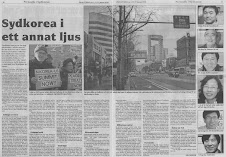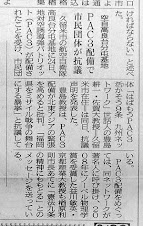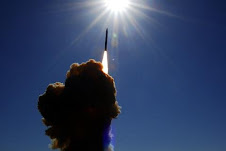How the Military Bases will bring the environmental damage
and Economic Decrement: Overseas Proofs
군사 기지들은 어떻게 환경 피해와 경제적 감퇴를 가져올 것인가? " 해외 증거들
Upon the blundering remarks of the Minister of the National Defense, Kim Tae-Young during the talks with the Gangjeong villagers on March 20, that the military bases in Hawaii contributed to the development of Hawaii, No Base Stories of Korea asked the activists in many countries, to provide the facts and proofs that the military bases (mostly U. S. bases) in their countries including Okinawa, Hawaii, Guam, Japan, and United States etc. have actually brought up the economic decrement and environmental damage. Many activists thankfully responded with much information. This site is the collection of the their information provided. Hope many people share the information here for the no bases movement in the world. ___________________________________________________________________Bruce K. Gagnon on the rocket fuel’s damage on the farming land, in the US bases in the United States (March 24, 2010)브루스 개그논으로부터, 로켓 연료가 농토에 주는 피해에 대해 (2010 년 3월 24일)[O]ne key pollution problem at the proposed Navy base on Jeju will be the fuel they put inside of the "missile defense" rockets on board the Aegis ships. All over America this rocket fuel has gotten into the ground water and contaminated it and now the fuel is showing up in milk and lettuce...
it is likely that the ground water on Gangjeong would become contaminated and then the tangerines would also become contaminated as a result. The fuel is called perchlorate and we have many articles on the GN web site about it.......
http://www.space4peace.org/pollution.htmBruce
*
http://www.wisn.com/health/19040768/detail.html___________________________________________________________________
Kyle Kajihirom, Hawai'i, Letter to Koreans (March 24, 2010)하와이의 카일 카지히로가 한국인들에게 보내는 편지 (2010 년 3월 24일)The Korean government's argument that militarization has been good for Hawai'i and would be good for Jeju is dead wrong. Militarization led to the loss of Hawai'i's independence as a country; it led to the destruction of the environment and disintegration of Hawaiian culture; it made Hawai'i a target during WWII and the Cold War; it brought the most virulent forms of racism and martial law to the islands; it provided America the platform from which to expand its empire; it continues to distort our development in ways that serve the interests of Empire and not the security of Hawai'i or the region.
In Hawai'i, Ke Awalau o Pu'uloa (Pearl Harbor) was once one of the most productive fisheries for Native Hawaiian people. There was an extensive agriculture-aquaculture complex that fed many thousands on O'ahu island. Ke Awalau o Pu'uloa was the reason America invaded and occupied the Kingdom of Hawai'i, but for its strategic location, not the abundance of its resources.
The Navy took this resource and turned the area into a toxic superfund site.
There are approximately 749 contaminated sites that the Navy has identified within the Pearl Harbor Naval Complex. There are now signs warning not to eat fish, crabs or shellfish from the waters at Ke Awalau o Pu'uloa. The waters are all off-limits to the public because of military security measures.
There are hundreds of other military contaminated sites.
Contamination includes PCB, perchloroethylene, jet fuel and diesel, mercury, lead, radioactive Cobalt 60, unexploded ordance, perchlorate, depleted uranium... It is partially true that the military has become a major source of revenue in Hawai'i, but at a very high price. The military economy is artificial. It is largely a result of the corrupt processes of the military-industrial-political complex and the game of earmarking defense appropriations for projects in the islands. This is the source of Senator Daniel Inouye's power, his ability to direct federal monies to Hawai'i, even at the expense of the environment, Hawaiian rights and sovereignty and peace in the Asia-Pacific region.
Also, Pearl Harbor has become a major tourist attraction because of its mythical significance in the American psyche.
The questions that we must always ask about the alleged economic benefits of the military in Hawai'i are: "Who gets paid? Who pays the price? What are the real social, cultural and environmental costs of such a dependent economy?" The native people of the land are the ones whose lands are always stolen and destroyed by the military. They live in the toxic shadow of the bases.
Other productive capacities wither away as Hawai'i has grown completely dependent on imports (90% of food is imported) and federal spending. Meanwhile those who benefit most from the military economy are the contractors (many who flock to Hawai'i when new appropriations flow in) who feed on the destruction wrought by all this so-called 'prosperity'. Many of these same contractors are lining up to feed on the destruction of Guahan.Sorry for this rather rambling email.
I hope there's something in Hawai'i's experience that can help to counter the pro-base arguments regarding Jeju.
In Solidarity
Kyle
___________________________________________________________________
Jean Downy, United States, on the various problems of the multiples US bases in the world (March 23, 2010)미국 진 다우니로부터, 세계의 미국 군사 기지 문제점 (2010년 3월 23일)* Jean, with many thankful comments, even though I omitted here.http://www.dmzhawaii.org/?p=5756Philippines: U.S. military pollution linked to deathshttp://www.japanfocus.org/-Hayashi-Kiminori/3185Overcoming American Military Base Pollution in Asia: Japan, Okinawa, Philippinehttp://www.protecthawaii.ws/Catherine Lutz: US Bases and Empire – looking at the Asia-Pacifichttp://www.dmzhawaii.org/?p=4272A lie: Local Economy Dependent on US Bases in the below URLhttp://www.anatakara.com/petition/peace-to-okinawa-peace-to-guam.htmlPeace to Okinawa Peace to Guamhttp://japanfocus.org/-Miyume-TANJI/3062
Community, Resistance and Sustainability in an Okinawan Village: Yomitan
Miyume TANJI The author is a famous Okinawa-born scholor who is now in the US or somewhere.
In the
Philippines, for example, only after the US military evacuated the
Subic Naval Station and Clark Air Base in 1992 did local communities discover that tons of toxic chemicals had been dumped on the ground and into the water, or buried in uncontrolled landfills, according to the Philippines-based People's Task Force for Base Clean-up in the Philippines, an advocacy organization.
http://www.albionmonitor.com/9809b/copyright/basecleanup.htmlUS Not Cleaning Up Ex-Military Base Pollution---------
The U.S. Navy is the largest polluter in the San Diego,
California area, having created 100 toxic sites during the last 80 years. Environmental damage caused by the Navy includes spilling over 11,000 gallons of oil into the San Diego Bay in 1988. Fish in the Bay contain high levels of mercury and radioactive compounds that are attributable to Navy pollution of the Bay. (4)
Near the Naval Air Station in Fallon, NV high rates of cancer and rare diseases have probably been linked to the dumping of jet fuel, radio and electronic emissions and the contamination of groundwater with radioactive materials. Fallon has the highest per capita rate of childhood leukemia in the nation. (5)
http://www.commondreams.org/views05/0327-21.htmMilitary Pollution: The Quintessential Universal Soldier___________________________________________________________________Makiko Sato, Japan, on the issues of Okinawa (March 23, 2010)일본 마끼꼬 사또로부터, 오키나와 관련(2010년 3월 23일) As for negative effects of a military base:this is official statistics in Okinawa on military-related incidents and accidents.http://www3.pref.okinawa.jp/site/view/contview.jsp?cateid=14&id=661&page=1Furthermore, below info needs much attention especially from women.
http://www.genuinesecurity.org/actions/obamatoguam.htmlLetter to Obama Regarding Guam(Feb. 14, 2010)
―' Local women live in fear because of the harassment, crime and violence committed by U.S. military personnel. For example,
U.S. troops commit 95% of abductions and rape cases in Okinawa. In February 2008, a U.S. Marine sexually assaulted a 14-year-old Okinawan girl. A week later, a 22-year-old Filipina woman in Okinawa was raped by a U.S. soldier. And these are not isolated cases. '
―
'Beyond this issue, a rise in prostitution and trafficking goes hand in hand with U.S. military bases and R&R sites, especially in the Asia Pacific region. Increasingly, poor women are being trafficked into the sex industry, and those working in this industry typically experience life-long trauma. '1. When Okinawa was returned to Japan after the long occupation, the US had secretly demanded Japan's paying a big sum of money for cleaning up some US bases polluted with its ammunition.
- - - - - - - - - - - - - - - - - - - - - - - - - - - - - - - - - - - - - - - - - - - - - - - - - - - - - - - - - - - - - - - - - - - - -
Still now, in some US bases in Okinawa, soil contamination is feared from
depleted uranium bombs and so on, but we don't know how bad it is, as nobody is allowed to enter.
So maybe the US will demand again money for returning their old bases.
In Korea, this kind of thing will surely happen.
The US will never return land to Korea for free. They will make Koreans pay for the cleaning up which they are supposed to do. If Korean government cannot afford to pay, then contaminated soil will never be cleaned up, the situation written here again in this URL.http://www.genuinesecurity.org/actions/obamatoguam.html―‘Bases that have been closed such as in the Philippines (1992) and the bombing ranges in
Vieques (2003) have still not been decontaminated and devolved for use by local communities.
Environmental contamination has been linked to high rates of cancer in communities alongside military fence lines.
Guahan and Vieques have no cancer treatment facilities, so people must spend their limited resources to travel elsewhere to receive the costly medical care they need.‘ ―
2. As I wrote in my message to Jeju about the number of port-calls made last year by US nuclear-powered carriers or submarines to Yokosuka, Okinawa, and so on, such port calls are problematic, but recently it is so from the perspective of a newly emerging health issue of minor radioactivity release.
Such US ships or submarines may call at Jeju repeatedly if the planned Navy base is construced there.
Local people in places with such ports in Japan are afraid of minor release of radioactivity into the sea from US submarines or other ships, not to mention a possible nuclear disaster. Minor release of radioactivity is now becoming a serious issue among citizens here who are against nuclear power plants.
Fish is strangely abundant at the emission pipe of a nuclear power plant, where cooled water containing minor radioactivity flows out into the ocean. And in the nearby sea, surprisingly big fish, big sea urchins ect. are found. They must be affected by minor radioactivity, which ends up in the bodies of human beings including children.
So from the same reason, port calls by US nuclear-powered submarines or aircraft carries must be dangerous, as they release water contaminated with radioactivity.
- - - - - - - - - - - - - - - - - - - - - - - - - - - - - - - - - - - - - - - - - - - - - - - - - - - - - - - - - - - - - - - - - - - - -
Last Sunday I went for a talk by a long-time famous activist-singer from Okinawa.
(In '70s, he burned our nationa flag out of furor toward our mainland government and got arrested. )
He gave us a good recent story in Okinawa, though his data is somewhat old.
But the situation is further better than in his story, according to an internet news article.
(・
The official website of the Prefecture of Okinawa http://www.pref.okinawa.jp/english/index.html ・
Military Base Affairs Divisionhttp://www3.pref.okinawa.jp/site/view/contview.jsp?cateid=14&id=662&page=1 )
★=Peace has brought in tourists and permanent new residents, increased revenues, tax revenues, and employment =★
(the title I've cooked up)*
economic boom after returning of Okinawa US base-related areas in Chatan, Maki, Tengan, Naha(* data from the handout delivered at his talk meeting
*This is the date of 2006 alone and some data items are missing
* Specific names related to the US forces are just by my translation)
In 1981 there were returns of some plots of the land occupied by the US bases (before → (after)
ーーーーーーーーーーーーーーーーーーーーーーー
●
Hambee (or Hamby) Airfield in Chatan-town, Okinawa(
http://www.chatan.jp/), returned in 1981
→ has revived as a tourism spot called 'American Village.'
http://ja.wikipedia.org/wiki/%E5%8C%97%E8%B0%B7%E7%94%BAhttp://gpzagogo.s8.xrea.com/hambyaf.htmlhttp://www.owjc.ac.jp/~s206018/index.html・population: 16,000 →26,800
・the number of employee: 100→2,259
・tax revenue of the town: ¥3.5million →¥108.5 million
*total investment money in businesses of the economic ripple effects (from the return of the base)~=¥172,671,000,000 ( about ¥173 billion)
●
Residential area at Port Maki → has been changed into'Naha new metropolis
' ・employees : 196 →7,168
・tax revenue:(no data)→ ¥1,048,000,000( about¥1.o4 billion for FY'06)
●
Tengan communication post・employees : 4 → 2,431
●
supportive facility of the US Air Force and the US navy in Naha・employees 470 →6,769
。。。。。。。。。。。。。。。。
■
average number of annual tourists to Okinawa in total440,000/year →6.04 million/year
■
average annual revenue from tourism in Okinawa in total ¥32.4 billion →¥410.4 billion
- - - - - - - - - - - - - - - - - - - - - - - - - - - - - - - - - - - - - - - - - - - - - - - - - - - - - - - - - - - - - - - - - - - - -
Of course it took time. And this dramatic change may have much to do with 9/11, as Japanese tourists, who had once tended to go abroad, stopped doing that, and then began to flock to nearby tourism spots like Okinawa, South Korea, and so on.
Which has brought down the air fare, which in turn has brought more tourists and businesses in a good spiral. The activist-singer said the cheaper air fare has been the biggest contributing factor, and that Okinawa can be financially independent if all the US bases are out. (It may be such a nice place to live in for retirees.)
Even if you have military bases, employments there are only temporary, and local economy is suffocated, not expands,with less tourists, he said.
But still in Okinawa, the unemployment rate is the highest in Japan, because of the big bases and base-related facilities which occupy huge territories there.
___________________________________________________________________Vanessa Warheit on Guam (March 24, 2010)바넷사 와히트로부터 구암관련(2010년 3월 24일)I think the best reference I can think of - wrt the proposed Guam buildup, anyway - is the (highly critical)
US Environmental Protection Agency (US EPA) report that just came out.
We Are Guahan has a succinct 10-point summary of the EPA's findings here:http://weareguahan.com/2010/03/03/10-things-you-should-know-about-us-epas-comment/Vanessa Warheit
Producer/Director
The Insular Empire: America in the Mariana Islands
http://theinsularempire.blogspot.comwww.theinsularempire.comvisit us on Facebook!
___________________________________________________________________Martin Frid, Japan, on Okinawa (March 25, 2010) 일본의 마틴 프리드로부터 , 오키나와 관련 (2010 년 3월 25일)________ Martin Frid’s first email (March 25, 2010)________ 마틴 프리드의 첫번째 이 메일 (2010년 3월 25일)There were several
Environmental Assesements (EA) for the Henoko base in Okinawa, Japan, but there is little on the Internet. In a rush, I can only find this:
Henoko Ordnance Ammunition Depot: Okinawa, Japan http://www.globalsecurity.org/military/facility/henoko.htm
Call for Action against Henoko Military Base Constructionhttp://okinawaforum.org/disagreeblog/2007/12/_call_for_action_against_henok.htmlCovering Okinawa in Eng., conthttp://okinawaforum.org/disagreeblog/english/
Martin J Frid
Kurashi News from Japan
http://www.martinjapan.blogspot.com- - - - - - - - - - - - - - - - - - - - - - - - - - - - - - - - - - - - - - - - - - - - - - - - - - - - - - - - - -
Some examples of complaints as part of the EA:
- The document
on procedures for conducting an environmental impact assessment of the new U.S. Marine Corps Air Station constructed by the Japanese government at coastal Henoko
did not go through a proper public hearing process as required by Japanese environmental laws. I would like to request you to call for a public re-examination of the Henoko document.
- The Okinawa Prefecture Environmental Impact Assessment Committee claimed the national government responded vaguely to its 76 questions regarding the document on procedures for conducting an environmental impact assessment of the new U.S. Marine Corps Air Station constructed by the Japanese government at coastal Henoko. I urge that the national government's response to the committee's 76 questions be made public.
- Accepting the flawed document on procedures for conducting an environmental impact assessment of the new U.S. Marine Corps Air Station constructed by the Japanese government at coastal Henoko will subvert the environmental assessment system, and will threaten Okinawa's environment for years. I would like to request you to urge the Japanese government to revise the Henoko document.
Also,
Greenpeace Japan (office in Tokyo)
has some information in English about the Japanese government's Environmental Assessment in 2007.http://www.greenpeace.or.jp/campaign/oceans/dugong/en/http://www.greenpeace.or.jp/press/releases_en/pr20070927_htmlNaha, Okinawa, September 27, 2007 --Greenpeace will deliver 30,313 messages from people all over the world saying "Stop the Impact Assessment and save the dugongs" to the Bureau of Defence Policy in Naha at 11:30am and to the Ministry of Environment in Tokyo at 1:45pm today.
Today is the last day the Defence Ministry will accept comments from the public regarding their proposal on how an Environmental Impact Assessment is executed in the two bays at Henoko and Oura, where the two runways are to be built for the U.S. Marine Corps. The 30,313 messages were sent from 155 countries, including more than 5,450 from the United States, in an online-action, which only began on 3 September.
"The construction of the air base will put in danger of extinction the last of the Japanese dugongs. There are some issues that should be put in first place by importance and I think this is one of them. Extinction is forever! Please reconsider the wish of thousands of people around the world, as well as the community of Okinawa, but most of all the wish of these wonderful creatures, the Dugongs." - September 18, from Japan.
"Please think again what is most needed to protect environment. Many people in the world are very conscious about what is important for our children, human-beings, animals and environment in future, in stead of immediate survival of just our generation. Please listen to those views and opinions and do please reconsider the plan to construct air-base over the sea at the expense of precious creatures like dugongs." - September 18, from Japan.
"The worldwide view of Japan's conservation efforts is, rightly or wrongly, a poor one because of your inexcusable stance on whaling. Here is an opportunity to partly rectify this by saving this population of Dugongs. The honour of your country is reflected in its actions. Please do the right thing".
________ Martin Frid’s second email (March 25, 2010)________ 마틴 프리드의 두번째 이 메일 (2010년 3월 25일)I also recommend this:
Impact on Okinawan Citizens ( May 24, 2009)
http://usmilitaryinokinawa.blogspot.com/2009/05/impact-on-okinawan-citizens.htmlViolent CrimesAccidents and NoiseEnvironmental ConcernsSources: Environmental Assessment Watch Group for the Dugons in Okinawa (Japanese)
http://jaga.way-nifty.com/dugong/http://jaga.way-nifty.com/dugong/Makishi, Y
http://www.ryukyu.ne.jp/%7Emaxi (2001).
Okinawaha Moudamasarenai. Tokyo: Koubunken. (His website is in Japanese)
Karan, P, P., (2005). Japan in The 21st Century: Environment, Economy, and Society: Lexington, KY: The University Press of Kentucky.
Okinawa Prefecture Government of Military Base Affairs Division http://www3.pref.okinawa.jp/site/view/contview.jsp?cateid=14&id=592&page=1
Aerial Photographs of U.S. Facilities <38>
http://www3.pref.okinawa.jp/site/view/contview.jsp?cateid=14&id=593&page=1Sunagawa, K. (2004).
Environmental Problems Caused by U.S. Military Bases. U.S. military Bases in Japan,
http://www.jca.apc.org/wsf_support/2004doc/WSFJapUSBaseRepoFinalAll.html14-15. Retrieved April 7, 2009.
Takazato, S. (2004).
Violence Against Women Under Long-Term U.S. Military Station in Okinawa. U.S. Military Bases in Japanhttp://www.jca.apc.org/wsf_support/2004doc/WSFJapUSBaseRepoFinalAll.html11-13. Retrieved April 7, 2009.
________ Martin Frid’s third email (March 25, 2010)________ 마틴 프리드의 세번째 이 메일 (2010년 3월 25일)Okinawa prefecture has officially listed some of the environmental damages from US bases 1996 to 2001 here:
http://www3.pref.okinawa.jp/site/view/contview.jsp?cateid=14&id=586&page=1
The existence of the vast U.S. military facilities and areas in our prefecture has had various impact on the Okinawan people's lives and the environment.
Hazardous impact on the health of residents living in the vicinity of the bases from daily air craft noise pollution is one of the particular issues we have. Other issues include the impact on the Okinawan people's lives and on the environment from incidents and accidents stemming from military base operations such as military aircraft (fighters, helicopters, etc.) crashes, POL (Petroleum Oil and Lubricants) and red silt outflow as well as mountain forest fires caused by live-firing exercises.
Further, there has been more than 5,076 cases of crime caused by the *SOFA status people since the reversion of Okinawa to mainland Japan. This number includes 531 cases of brutal crimes and 955 cases of assaults. Thus, there is fear amongst the peopole of Okinawa as to whether or not security for their daily lives can be maintained and whether their property can be preserved.
Since Okinawas reversion until the end of December 2001, U.S. military aircraft-related accidents have occurred 157 times (of which 39 were aircraft crashes). Aircraft accidents could become a tragic accident involving the lives of the local residents. Thus, these accidents are a concern to the residents living in the vicinity of the base as well as to all the other people of Okinawa.
▲U.S. Marine Corps’ UH-1N helicopter that crashed within Camp Hansen in July 1998.
In July 1998, a U.S. Marine UH-1N helicopter crashed within Camp Hansen. In April 1999, a CH-53E helicopter crashed in the waters off the Northern Training Area killing the four crew members on board. In addition, in June of the same year, an AV-8 Harrier crashed on the runway at Kadena Air Base after it took-off. These types of accident have greatly shocked and worries the Okinawan pepole.
Each time an accident or incident stemming from the U.S. military base occurs, the Okinawa Prefectural Government has petitioned the administrative organs concerned for the prevention of such accidents or incidents. We will continue to do so and make efforts to prevent damage caused by the military bases.
Aircraft noise has been measured at certain spots in the vicinity of Kadena Air Base and Futenma Air Station. It was found that at over half of these measuring spots, noise levels exceeded the standard set by the Environment Agency. Thus, there are concerns that the aircraft noise pollution has a negative impact on the everyday lives and health of residents in the area. Aircraft noise affects residents from an educational standpoint as well, often interrupting classes at schools in the vicinity.
At the training areas in Camp Hansen, repeated live-fire exercises and mountain forest fires caused by these exercises are denuding mountain surfaces of their valuable greenery, causing our irreplaceable natural environment to be lost.
In addition, it is expected to take many years and an enormous amount of money to dispose of the countless number of unexploded shells within Camp Hansen.
▲U.S. military exercises often cause forest fires destroying precious greenery.
At Onna Communication Site, which was returned in November 1995,
contaminated toxic substances, such as
polychlorinated biphenyl(PCB) which exceeded the accepted environmental pollution limit, were detected in sludge left inside purification tanks. After detection, the Japanese government had to remove it.
In addition, the media reported in July 1998 that there had been a holding pond within Kadena Air Base used as a dumping site for waste oil containing PCB. The U.S. government conducted an environmental survey followed by the Government of Japan conducting a supplementary survey. From the results of these surveys, it was concluded that there was no impact on the health of people. However, this incident has raised the concerns of the local residents about environmental issues stemming from the U.S. military bases.
________ Martin Frid’s forth email (March 25, 2010)________ 마틴 프리드의 네번째 이 메일 (2010년 3월 25일)Do you have someone who can read Japanese? WWF Japan has issued several statements and reports in Japanese about the US bases and the huge environmental impact on Okinawa. For example, here is there
demand that the helicopter landing strip NOT be located in the Yanbara forest, northern Okinawa, as it is home for a lot of biological diversity and unique wildlife. WWF is a global environmental organization, very respected. They are usually not so radical but WWF Japan has made a lot of effort to campaign against further destruction of Okinawa due to American military activities and US bases.
http://www.wwf.or.jp/activities/2007/06/594914.htmlOfficial English translation (PDF)
http://www.wwf.or.jp/activities/lib/pdf/yanbaru0706e.pdfAlso, below is a translated statement from WWF Japan about Henoko, Okinawa that can be helpful for your efforts:
http://okinawaforum.org/disagreeblog/2007/05/wwfworld_wide_fund_for_nature.htmlMartin
WWF (World Wide Fund for Nature) Japan StatementFollowing is a reproduction of a statement by WWFJapan
http://www.wwf.or.jp/It states:
Firstly, the Ministry of Defense calls the "pre-survey" ongoing in Henoko VIOLATES Environmental Impact Assessment Law;
Secondly, the Ministry is proceeding the "pre-survey" with the details remain UNPUBLICIZED, although it is ESSENTIAL to consult experts, environmental protection agencies, and local residents in order to ascertain the best methods to adopt, causing the minimum amount of impact on the surveyed environmentsurvey; and if this "pre-survey" affects the environment, later Environmental Impact Assessments inevitablybecome INACCURATE and UNRELIABLE.
Lastly, the dispatch of members and a Maritime Self-Defense Force warship to execute a survey coercively is NOT the action of a DEMOCRATIC GOVERNMENT.
======================================
"A Statement of Remonstration against the breach of the Environmental Impact Assessment Law by the Japanese Ministry of Defense"
WWF-Japan
======================================
The Ministry of Defense is planning to execute a preliminary survey of the Henoko and Ooura bay, an act which runs against the Japanese Environmental Impact Assessment Law. Moreover, the Ministry is preparing to dispatch a minesweeper tender to Okinawa to aid in the survey.
WWF-Japan strongly opposes this breach of the environmental impact assessment law as well as the action of dispatching a minesweeper tender; WWF-Japan works towards the environmental conservation of the Henoko and Ooura bay, critical habitats for the Okinawan dugong. WWF-Japan hopes to maintain the environmental impact assessment law.
1. The Ministry of Defense plans to execute a preliminary survey before processing the Environmental Impact Assessment. However, this will not be a precise or open environmental assessment, since the appropriate law-abiding procedures will not be/ have not been conducted. By surveying in chambers and not creating a methodological document of the survey as part of the preparatory court pleading and drafting of the evaluation document, the Ministry merely upholds a facade of the Environmental Impact Assessment and disregards the central meaning of the Environmental Impact Assessment Law, tantamount to tort.
2. In order to survey the environment and wildlife to predict and evaluate the impact cause by such a development, it is essential to consult experts, environmental protection agencies, and local residents in order to ascertain the best methods to adopt, causing the minimum amount of impact on the surveyed environment. However, since the Ministry's action is non-disclosure, it is difficult to assess the validity of its investigative methods, as well as the possible influence of the instruments and devices it deploys. Therefore if this preliminary survey affects the environment, later Environmental Impact Assessments inevitably become inaccurate and unreliable.
3. To dispatch members and a Maritime Self-Defense Force warship to execute a survey coercively is not the action of a democratic government. The Ministry of Defense should abandon the plan to dispatch a minesweeper tender and to carry out a irrelevant preliminary survey, and should instead go through the proper legal procedures pertaining to the Environmental Impact Assessment.
For inquiries please contact:
Shin-ichi Hanawa
WWF-Japan, Nature conservation division
3-1-14 Shiba Minato-ku Tokyo 105-0014 Japan
TEL.+81-3-3769-1713,FAX.+81-3-3769-1717
___________________________________________________________________Makiko Sato, Japan, on Takae (March 26, 2010)마끼꼬 사또, 일본, 다까에에 관해 (2010년 3월 26일)I'm Makiko, living in Oita, Kyushu where US military trainings are held principally every year.
This message, June 14th, 2007, of WWF are known only to those concerned here in Japan.
And it is different from the PDF message of WWF Japan which has a Japanese version as well, both of which is general information on the issue of Takae.
The 2007 message was issued to our government, so it has very technical words and was difficult to translate, but I tried as to the latter half into English for I couldn't find its English version.
Here it is, around the middle of the page.
http://www.anatakara.com/petition/judicial-system-is-not-for-oppression.htmlDemanding the cancellation of the helipad constructionWWF ジャパン(世界自然保護基金ジャパン) 2007年6月14日
(arbitrary translation of excerpt)
But regrettably, our government will not care about such 'environmental' issue.
If they did, they would not have sued those two living in Takae.
And the US, either. Building an off-shore base off-Henoko, as the US still insist on that, will not comply to the USEPA's DEIS, but Gates has said he would challenge that.
However, I think, if the world citizens insist on the elimination of US bases from where the nature should be preserved, their attitude may be changed.


 * Park Ji-Yeon, 23, a Samsung worker who died on March 31, 2010 has left her letter to an activist,
* Park Ji-Yeon, 23, a Samsung worker who died on March 31, 2010 has left her letter to an activist,
 *A rally for demanding the Samsung’s responsibility for the mass leukemia of the Samsung semi-conduct workers’ in front of Kiheung factory, Samsung Electronics, March 25, the next day of the returning back of the former Samsung President, Lee Gun-Hee to his work. (translation)
*A rally for demanding the Samsung’s responsibility for the mass leukemia of the Samsung semi-conduct workers’ in front of Kiheung factory, Samsung Electronics, March 25, the next day of the returning back of the former Samsung President, Lee Gun-Hee to his work. (translation)











![[URGENT PLEA: In Update] EMERGENCY in GANGJEONG Since AUG. 24, 2011](http://2.bp.blogspot.com/-3iz8k-USXVY/TlmRYhhIYtI/AAAAAAAAL2c/9dbF85ZIkIs/s227/jejusit.jpg)

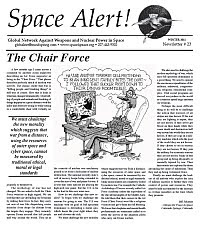

![[Solidarity from Japan for the Jeju] 253 individuals and 16 groups/organizations](http://2.bp.blogspot.com/_gnM5QlRx-4c/TR_YeNVE1yI/AAAAAAAAHWQ/ARyf6oQN0S0/S227/jeju_12_10j.jpg)
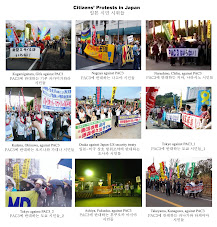
![[Translation] Korean organizations' statement: Immediately cancel the joint ROK-US drill Nov 26](http://2.bp.blogspot.com/_gnM5QlRx-4c/TPOE8VKXHFI/AAAAAAAAGlM/8lryt-8sFjc/S227/1.jpg)
![HOT! [Hankyoreh Hani TV] Beneath the Surface: the investigation into the sinking of the Cheonan](http://4.bp.blogspot.com/_gnM5QlRx-4c/TOI83qht8aI/AAAAAAAAGXU/22SW6Q5ntV8/S227/HaniTV%2BCheonan.gif)
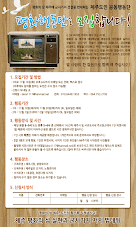
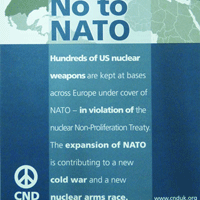

![[Translation]Statement against illegal inspection and unjust lay-off by the Kunsan USAFK!(Nov_2010)](http://4.bp.blogspot.com/_gnM5QlRx-4c/TOPLsVkZMqI/AAAAAAAAGZs/3YnnckIyAaY/S227/gunsan%2Bprotest.gif)
![[Translation] Korean organizations' statement against dispatching special force to the UAE on Nov.](http://4.bp.blogspot.com/_gnM5QlRx-4c/TOP95zHXlCI/AAAAAAAAGak/E0Ug1XtUFfM/S227/antiwarpeace.jpg)
![[Translation] Stop, Joining MD!: South Korean activists' statement and writing on Oct. 25, 2010](http://3.bp.blogspot.com/_gnM5QlRx-4c/TOP7Es4_2sI/AAAAAAAAGac/eWVMPD-U4p0/S227/StopMD.jpg)
![[In Update] People First, NO G-20 (Nov. 6 to 12, Korea)](http://2.bp.blogspot.com/_gnM5QlRx-4c/TJd53XBzHlI/AAAAAAAAFQo/ldO9JPE3eqo/S227/left21_G20.jpg)
![[International Petition] Stop US helipad plan in Okinawa to save great nature](http://4.bp.blogspot.com/_gnM5QlRx-4c/TKC2AHRNzBI/AAAAAAAAFUo/yGWXODTw_uM/S227/yanbaru_w.jpg)

![[Global Network] against the first launch of Quasi-Zenith Satellite, Japan, on Sept. 11, 2010](http://4.bp.blogspot.com/_gnM5QlRx-4c/TIowa1boy4I/AAAAAAAAFDI/82rAi98uq-c/S227/Qzss-45-0_09.jpg)

![[In update] Some collections on the Koreans’ protests against the sanction & war on Iran](http://4.bp.blogspot.com/_gnM5QlRx-4c/TJMvke6t8zI/AAAAAAAAFO4/tamQ8LUnOOA/S227/No+Sanction+on+Iran.jpg)
![[Three International Petitions] to End the Korean war and peace treaty(or peace resolution)](http://1.bp.blogspot.com/_gnM5QlRx-4c/THef7bzWxYI/AAAAAAAAE44/wwdzSDfYhdw/S227/border.jpg)
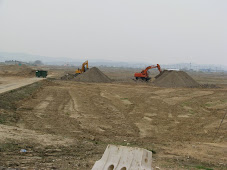


![[Collection of Documents] No Base Learning and Solidarity Program_Korea(June 14 to 20, 2010)](http://1.bp.blogspot.com/_gnM5QlRx-4c/TCTvVuN8NeI/AAAAAAAAEek/8vBJVaHdk10/S227/No-Base-banner.jpg)
![Site Fwd:[John Hines] A U.S. Debate coach’s research trip on the Issues of Korea](http://3.bp.blogspot.com/_gnM5QlRx-4c/TINCO36mzzI/AAAAAAAAE_w/Rds12NcBOXM/S227/Jeju-Peace-Tour.jpg)


![[News Update] Struggle Against the Jeju Naval Base since Jan. 18, 2010](http://1.bp.blogspot.com/_gnM5QlRx-4c/S1vvWaP25uI/AAAAAAAACkg/QvpW1tgOlKM/S226/scrum1.jpg)


![[Urgent] Please spread the Letter!: There was no Explosion! There was no Torpedo! (May 26, 2010)](http://4.bp.blogspot.com/_gnM5QlRx-4c/S_9JmsKEU7I/AAAAAAAAEP8/sAWjSPqxzUI/S227/grounded.jpg)
![Text Fwd: [Stephen Gowans]The sinking of the Cheonan: Another Gulf of Tonkin incident](http://1.bp.blogspot.com/_gnM5QlRx-4c/TAL_FtYKQ-I/AAAAAAAAERE/NEEMijiEcRM/S227/lee-myung-bak.jpg)
![[Japan Focus]Politics in Command: The "International" Investigation into the Sinking of the Cheonan](http://1.bp.blogspot.com/_gnM5QlRx-4c/TBMJ2syJzyI/AAAAAAAAEZU/uTYZccU5vyk/S227/wen_jiabao_and_lee_myungbak.png)
![[Japan Focus] Who Sank the SK Warship Cheonan? A New Stage in the US-Korean War and US-China](http://2.bp.blogspot.com/_gnM5QlRx-4c/S_iQ2vE5ZpI/AAAAAAAAEOU/Oo1SPcAe8FE/S227/buoy_map.gif)
![[Updated on 12/13/10] [Translation Project] Overseas Proofs on the Damages by the Military Bases](http://4.bp.blogspot.com/_gnM5QlRx-4c/S-qSj59gPLI/AAAAAAAAEGM/mwjlFtPE-jo/S227/missile.jpg)
![[International Petition] Close the Bases in Okinawa](http://3.bp.blogspot.com/_gnM5QlRx-4c/S8-z3DYNwNI/AAAAAAAADo4/OswTSchK09M/S227/2.jpg)

![[In Update]Blog Collection: No Korean Troops in Afghanistan](http://4.bp.blogspot.com/_gnM5QlRx-4c/SwnlLD9IewI/AAAAAAAAB9E/oUPssnpNidA/S226/No-Troops-to--Afghanistan.jpg)
